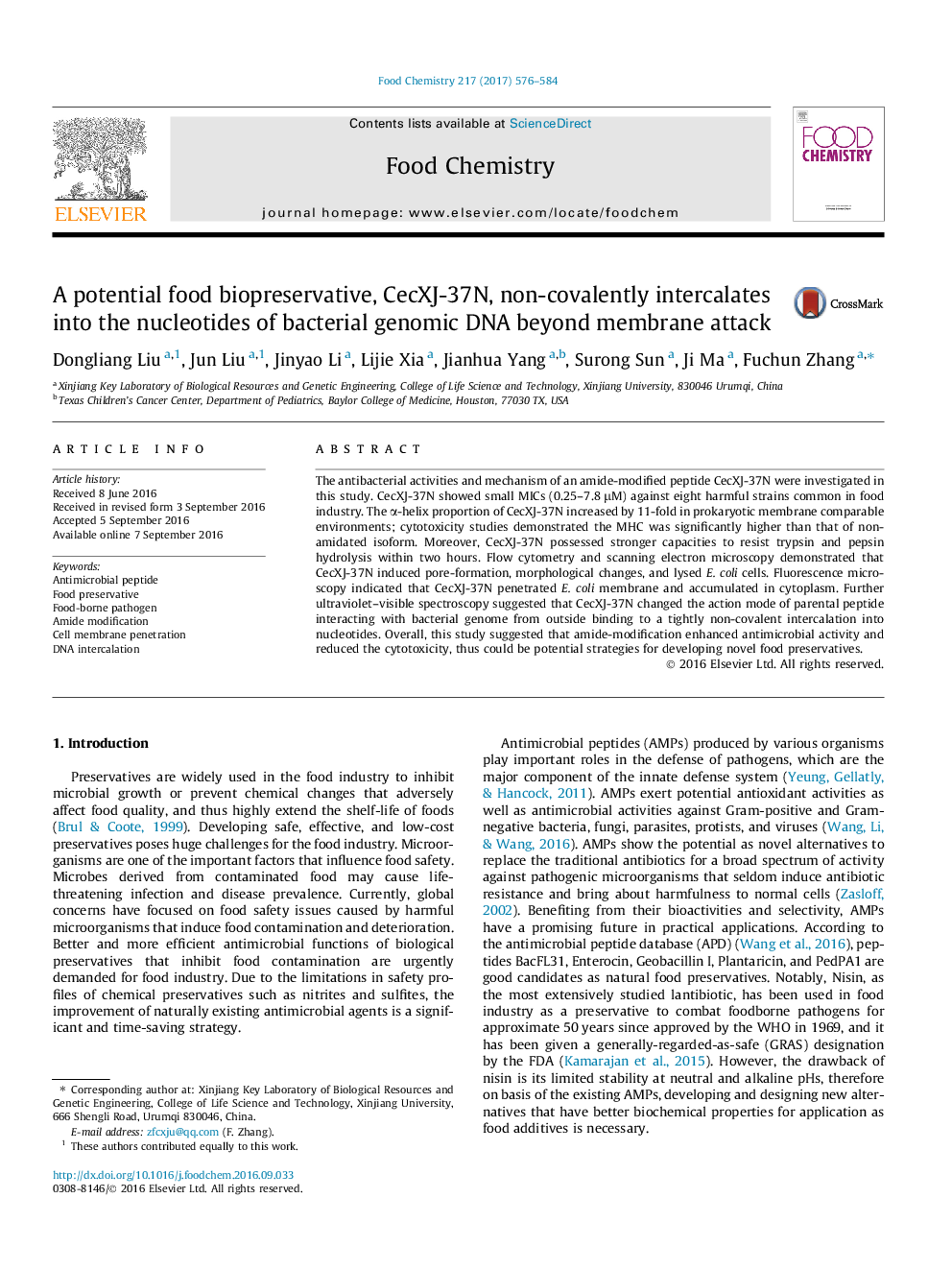| Article ID | Journal | Published Year | Pages | File Type |
|---|---|---|---|---|
| 7586756 | Food Chemistry | 2017 | 9 Pages |
Abstract
The antibacterial activities and mechanism of an amide-modified peptide CecXJ-37N were investigated in this study. CecXJ-37N showed small MICs (0.25-7.8 μM) against eight harmful strains common in food industry. The α-helix proportion of CecXJ-37N increased by 11-fold in prokaryotic membrane comparable environments; cytotoxicity studies demonstrated the MHC was significantly higher than that of non-amidated isoform. Moreover, CecXJ-37N possessed stronger capacities to resist trypsin and pepsin hydrolysis within two hours. Flow cytometry and scanning electron microscopy demonstrated that CecXJ-37N induced pore-formation, morphological changes, and lysed E. coli cells. Fluorescence microscopy indicated that CecXJ-37N penetrated E. coli membrane and accumulated in cytoplasm. Further ultraviolet-visible spectroscopy suggested that CecXJ-37N changed the action mode of parental peptide interacting with bacterial genome from outside binding to a tightly non-covalent intercalation into nucleotides. Overall, this study suggested that amide-modification enhanced antimicrobial activity and reduced the cytotoxicity, thus could be potential strategies for developing novel food preservatives.
Related Topics
Physical Sciences and Engineering
Chemistry
Analytical Chemistry
Authors
Dongliang Liu, Jun Liu, Jinyao Li, Lijie Xia, Jianhua Yang, Surong Sun, Ji Ma, Fuchun Zhang,
